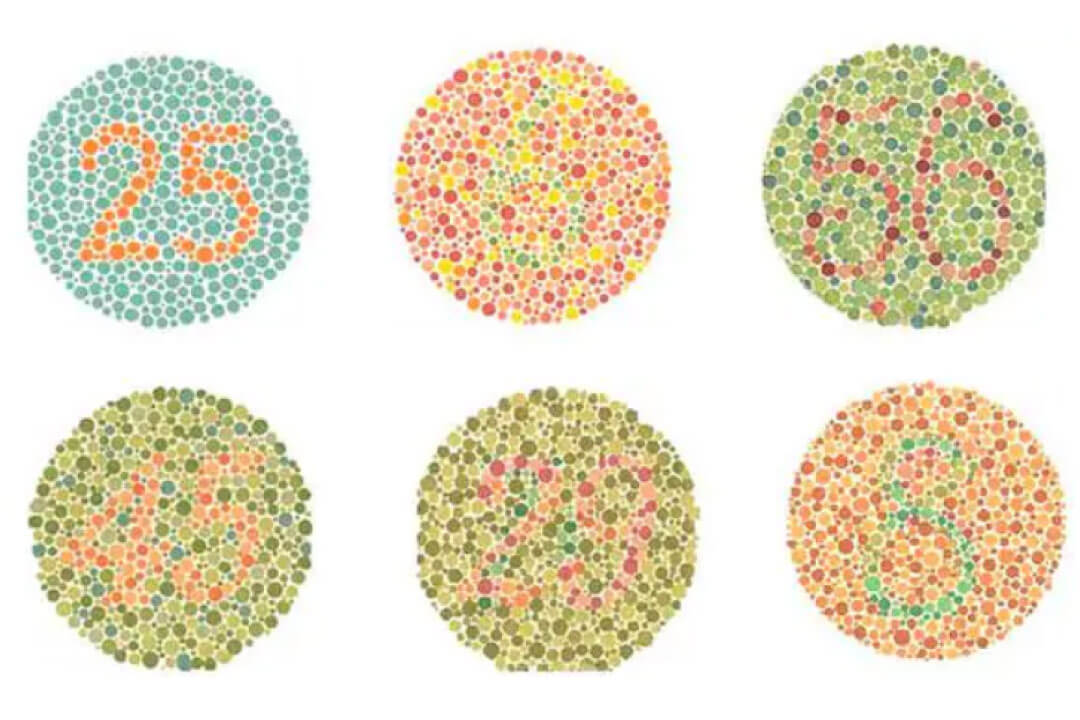What is colour blindness?
Colour blindness, or more accurately, Colour Vision Deficiency, is an interesting eye condition because it highlights that we do not all see things in exactly the same way as other people do.
People who are colour blind have difficulty in distinguishing colours. The effect can range from mild to severe. For some, colours can simply appear “washed out”; for others, different colours may look so similar that they find it difficult to distinguish between them; and very rarely, some individuals with colour blindness may not be able to perceive any colour at all!
Colour blindness is usually hereditary and since the condition is recessive and carried on the X chromosome, it is much more likely to affect males than females. Approximately 8% of men have a colour vision deficiency, yet only 0.5% of females do. Colour blindness can also be acquired later in life. Diseases that damage the optic nerve or retina can result in changes in your colour vision. Diabetes, Alzheimer’s, Multiple Sclerosis and glaucoma are all examples of conditions that can cause colour blindness.

Are there different types of colour blindness?
Normal vision is called trichromatic vision, which simply means that you can see the three primary colours (red, green and blue) without any issue. There are three types of colour blindness which are related to changes in the way your eye sees one or more of these primary colours:
Red-Green Colour Blindness – This is the most common type of colour blindness and it results in a difficulty distinguishing between the colours red and green. Some people with red-green colour blindness see greens as looking more like red, while others see reds as more like green, while others may not be able to see red or green at all.
Blue-Yellow Colour Blindness – This is relatively uncommon and is characterised by a difficulty in distinguishing between blue and green, or between yellow and red.
Complete Colour Blindness – This is called Achromatopsia and is extremely rare. Individuals with achromatopsia see the world around them only in shades of grey, black and white.

How do we test for colour blindness?
In our optometry practice, the most common test we use to screen for colour blindness is the Ishihara Colour Vision Test. The test involves showing a patient a series of plates each displaying an image of numerous dots of different size, colour and brightness.
Within each plate, a figure (usually a number but sometimes also a pattern) is hidden. People with normal colour vision can easily detect and identify the hidden figure but those with colour blindness will struggle to identify it (mainly because all the dots look the same colour to them).
The test is fast, simple and pretty fun too! If the screening test identifies a colour vision deficiency, other tests can be used to diagnose the actual type of colour blindness that a patient has.

Is there a cure?
There is no cure for inherited colour blindness. Some types of acquired colour blindness can improve over time, depending on what caused it in the first place. Generally, people born with colour blindness manage pretty well, and since they have never experienced seeing colours any differently, sometimes people are not even aware they have it until they have their eyes tested.
Am I colour blind?
If you’re now wondering whether you could be colour blind, there’s a simple way to find out! Come in for an eye test and we’ll let you know. Book an appointment online and we’ll see you soon!
Ready to book an appointment?
Online bookings available or call us on (07) 3463 0349.
This website does not provide medical advice. It is intended for informational purposes only. It is not a substitute for professional medical advice, diagnosis or treatment. Never ignore professional medical advice in seeking treatment. If you think you may have a medical emergency, immediately dial Triple 0 (000).

